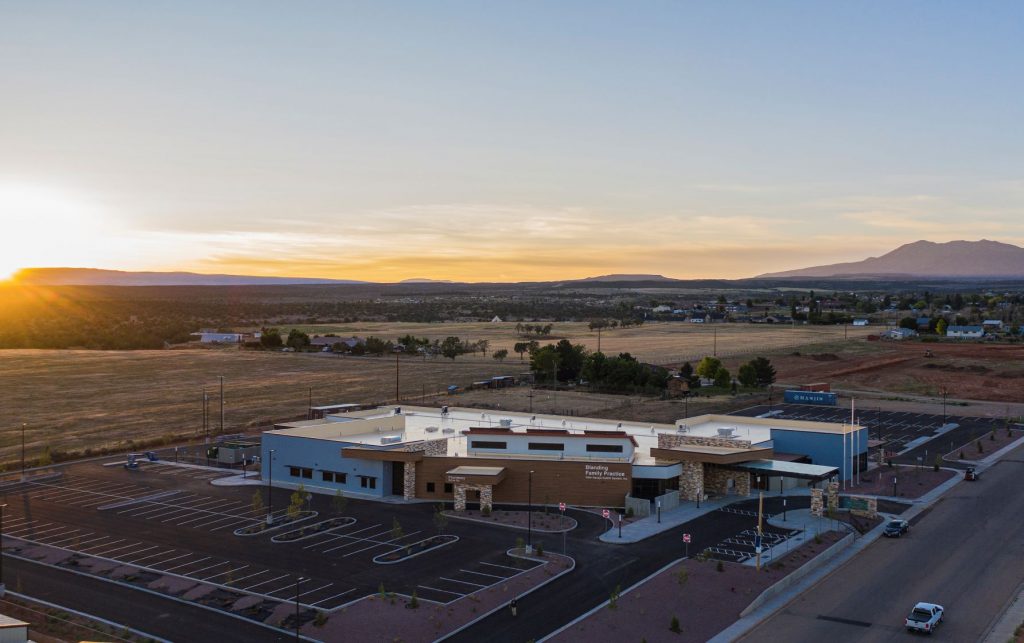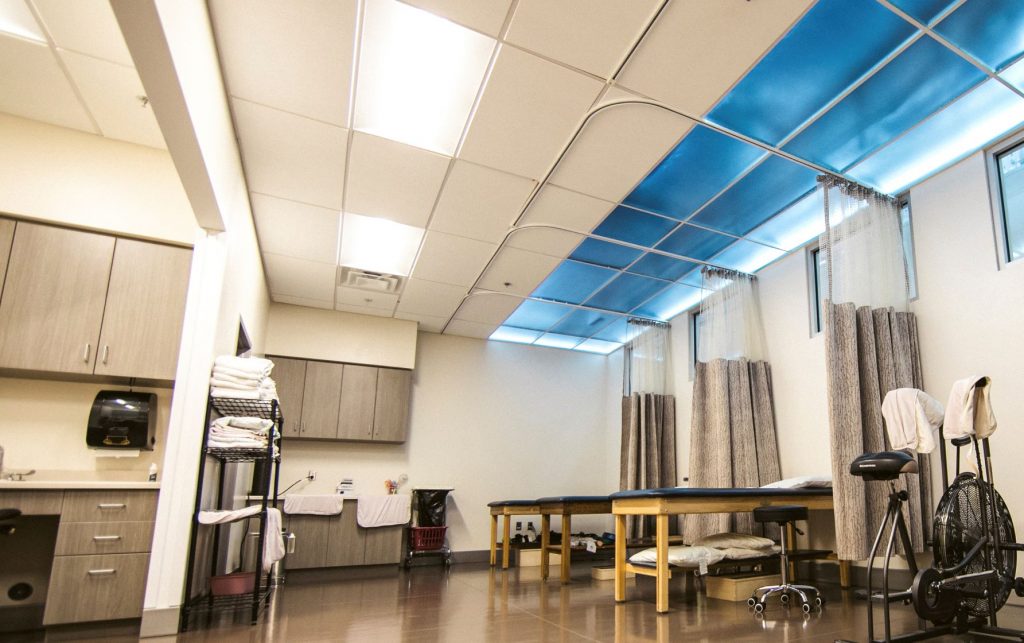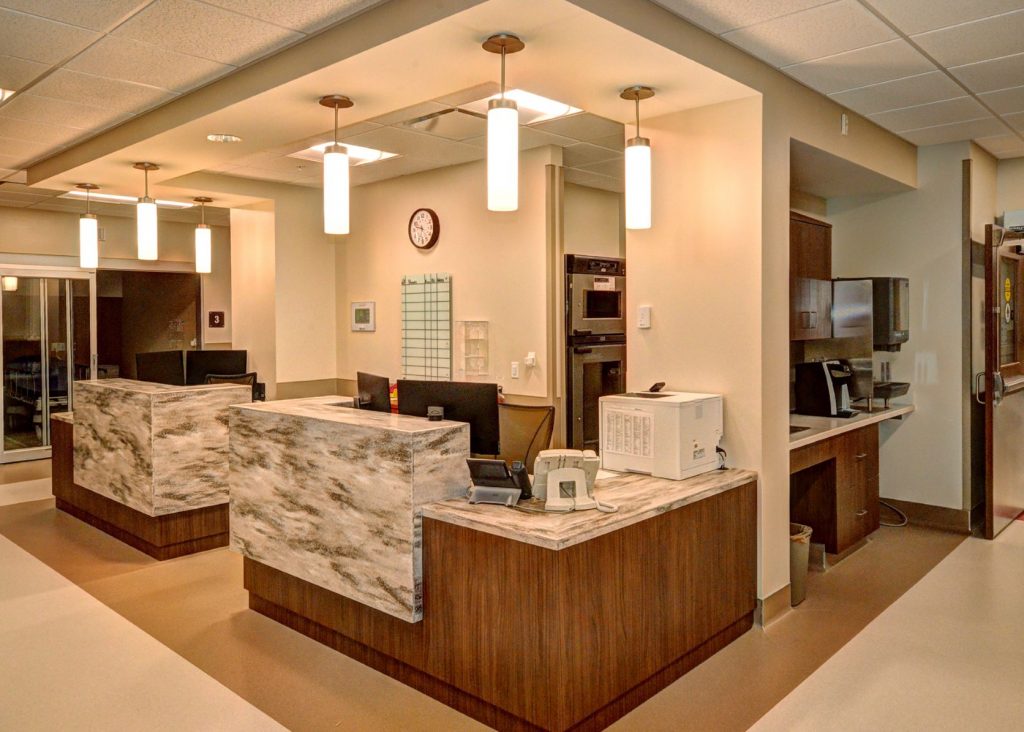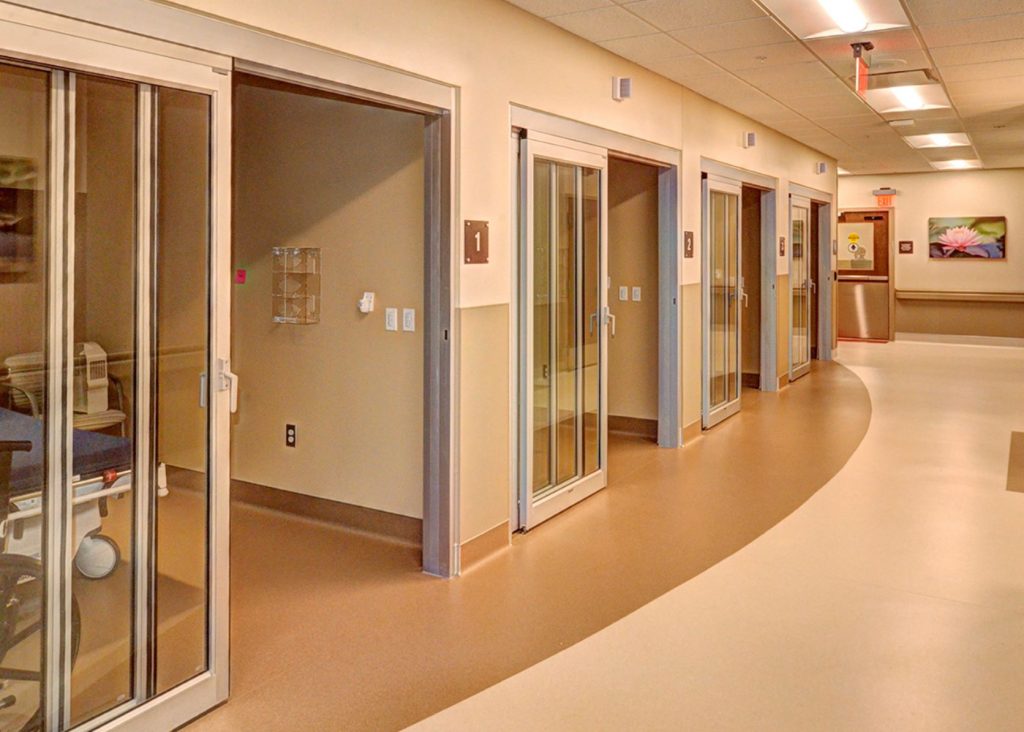What’s Ahead for Ambulatory Surgery Centers
By Anthony Walker
As COVID-19 vaccinations continue to roll out across the country and healthcare consumers begin to reschedule postponed elective surgeries, now is the time for healthcare leaders to reassess their ambulatory surgery center (ASC) strategies in preparation for the next potential crisis.
Below are insights, strategies, and critical planning drivers to help health systems stay ahead of changes in the ASC market.
Plan for growth
Based on an industrywide study, ASCs continue to perform more than half of all U.S. outpatient surgical procedures, and they can expect to see greater volumes as the number of outpatient procedures increases an estimated 15% by 2028. However, analysts predict this number will be even higher based on the Centers for Medicare and Medicaid Services (CMS) 2021 final rule on the Outpatient Prospective Payment System and ASCs.

With the goal of giving Medicare beneficiaries more choices regarding surgical services, the rule begins to eliminate the Inpatient Only (IPO) list over a three-year transition period. The IPO list is a series of 1,700 procedures for which Medicare will only pay when performed in the hospital inpatient setting. Under the new rule, over 250 musculoskeletal-related services that previously could only be done in an inpatient setting can now be done in an outpatient ASC.
In addition, CMS added 11 services to the ASC Covered Procedures List—including total hip replacements—continuing the agency’s efforts to shift more inpatient hospital care to outpatient settings.
With many ASCs focused on orthopedic services, the rulemaking could significantly increase ASC volumes. As new CMS rules allow more procedures to be done in an outpatient setting, it is possible that by 2030, 90% of all surgeries completed in the United States will be done on an outpatient basis.
Understand the market
This potential growth, fueled in large part by CMS incentivizing the shift in surgical procedures from inpatient to outpatient settings, means healthcare organizations (especially large health systems) continue to see investment in ASCs as a critical strategic move.
Last year, Tenet Healthcare Corp. increased its investment in an ASC chain even as it divested other assets. Meanwhile, a recent survey of health systems reported that from 2019 to 2020, those planning to increase their investments in ASCs rose from 44% to 67%. An even more impressive 76% of larger hospitals report increasing their investments in ASCs.
Factor in reimbursement rates
As reimbursement continues to evolve, ASCs must evolve with it. Not only CMS reimbursement rates but also private insurers have incentivized the outpatient trend as they refuse to pay for inpatient surgery except for a few specific exceptions (and that list is shrinking rapidly).
Hospitals have tried to insulate themselves from this trend by focusing on high-revenue procedures that can only be performed in an inpatient OR. They have also been buoyed by higher reimbursement for ambulatory procedures performed in a hospital outpatient surgery department.
However, this favorable pay differential is steadily decreasing as CMS moves toward reimbursement structures that support site neutrality. Health systems must incorporate a robust outpatient surgery strategy or watch their profit margins decline.
Right-size your ASC design
Several influencing factors determine an optimal design. At the top of the list are items that directly impact your business model, including market segmentation, demographics, and industry-specific market trends.

Given this fluid collection of influencers, multiple solutions and executable options—each with its own distinct advantages—may stem from any given design. In simple terms, each project has its own optimal solutions. Owners must be aware that modifications are a function of the construction process.
One of the most dynamic and efficient project delivery systems in the healthcare industry is design-build, a construction method that provides owners with a single point of contact for both the design and construction phases of a project. It enables shareholders, owners, designers, and constructors to collaborate in a process that embraces and optimizes creative design solutions.
The most important aspect of designing an ASC is right-sizing it based on volume and case mix. If you build a bigger surgery center than your volume can support, you incur costs every month, regardless of whether you have the cases to support it—when your volume or case mix changes, you can’t reduce the size of a building like you can reduce the number of FTEs. A single-specialty ASC can be sized efficiently to reduce extraneous storage, redundant equipment, and underutilized space. However, this approach may compromise your ability to accommodate additional service lines in the future. Remember to plan for anticipated growth.
In sizing your ASC, determine how critical procedural flexibility is to your business plan: Is it worth investing in shelled space for later fit-out, or can growth be accommodated by a building expansion? Remember that adding ORs requires adding a proportional amount of preop and recovery bays, as well as storage, waiting room chairs, staff lockers, and business office space.
Emphasize efficiency
A well-designed ASC facility aims to accommodate preoperative and postoperative areas bridged by efficient process flows, while also keeping patients and providers comfortable and secure.
As budgets and reimbursement models fluctuate, many healthcare systems are conducting time studies to codify usage with the goal of optimizing the efficiency and versatility of their existing space. Many are finding some unexpected cost savings in the process, such as in the reduction of staffing needs. For example, by locating staff offices adjacent to patient registration areas, administrative staff can assist during peak admitting times, reducing the need for another FTE.

Optimize scheduling
Understanding the impact of physician schedules is critical in designing an ASC. For example, say Dr. Smith prefers to schedule his procedures on Tuesday morning between 8 and noon, requiring back-to-back ORs for efficiency purposes. Dr. Jones and Dr. Anderson also prefer to do procedures on Tuesday mornings, requiring another four to six ORs. If you plan the number of ORs based solely on these physicians’ preferences, you may overbuild by including ORs that would be unnecessary if one of the physicians moved their procedures to Tuesday afternoon.

Hospital-based surgeons specializing in high-reimbursement inpatient procedures have a great deal of influence in the scheduling of ORs. Consider having a discussion with these physicians to see if you can achieve better OR usage efficiency before adding unnecessary ORs.
The healthcare arena is a dynamic workplace with many interrelated moving parts. Stakeholders should coordinate to deliver the best results. If any single component disproportionately drives decision-making, the process naturally becomes imbalanced and efficiency is inevitably impacted.
Remember that not all service lines are equal
Service lines have unique requirements regarding OR and recovery timing. For example, ophthalmology surgery may take 15 minutes followed by 30 minutes of recovery while more complex orthopedic surgeries may take anywhere from 2.5 to seven hours, with the patient spending about the same length of time in recovery as they did in the OR. Understanding these differences can help you lay out ORs and recovery areas to maximize efficiency and throughput.
Account for the rise of “one-stop healthcare”
With higher healthcare deductibles and busier lives, consumers are increasingly seeking access to affordable, competent, and convenient healthcare, as shown by the rise of urgent care centers and retail clinics. With low wait times, quick turnover, and high flexibility, these walk-in facilities offer the convenient care that many patients are looking for.
To address this, an increasing number of ASCs are recruiting other specialties with surgical cases, such as gynecology and dermatology to provide a “one-stop shopping” model. If this trend continues, it could result in larger multispecialty ASCs with imaging capabilities or even an urgent care component.
Enhancing the patient experience is an important design driver, and providing a one-stop location to meet multiple healthcare needs can differentiate your ASC in a competitive market.
Consider the life span of the building
Medical technology and equipment, procedure types, building codes, and AIA/FGI guidelines will all significantly change over time. ASCs will need to adapt to these changes, and they should be designed with this knowledge in mind.
As a result, most ASCs need to reevaluate their facilities every 10 years to keep current and relevant with care delivery. The types and complexity of procedures offered in an ASC environment evolve so quickly that when planning your ASC, you must consider future flexibility for additional growth.
Plan for future volume increases by including easy access for later electrical and medical gas additions. Remember to update interior finishes regularly in order to remain competitive with newer ASCs.
Incorporate strategies to fight “budget bloat”
ASCs do not need to be constructed with the same level of redundancy as a stand-alone hospital. They can be built with a wider variety of construction types and materials, which can reduce the project cost while still adhering to code.
In fact, several health systems have successfully converted existing big-box retail centers and former grocery stores in urban areas, leveraging their location to attract patients who prefer to obtain healthcare closer to home and not in a traditional hospital setting. Physician-owned ASCs consider the building to be a 10- to 15-year investment and view the building as a real estate investment, not a hospital asset.
When planning a new ASC, challenge every assumption and ask why components are truly necessary. Investigate alternate building methods such as lighter-gauge steel studs and modular building components.
At the same time, traditional methods of evaluating budget efficiency may not be the most effective metrics. Rather, stakeholders may consider evaluating projects using an income generation lens (similar to retail) that evaluates revenue generated per square foot rather than cost per square foot.
Expect the ASC boom to continue
Reimbursement incentives, combined with greater consumer demand for an accessible and enhanced healthcare experience, will continue to contribute to the ASC building boom. As the healthcare industry recovers from the COVID-19 pandemic and looks to the future, a robust ASC strategy can help hospitals become more resilient, promote value-based care, increase patient satisfaction, control costs, and maintain a strong operating margin.
Anthony Walker is healthcare project executive with The Korte Company.
